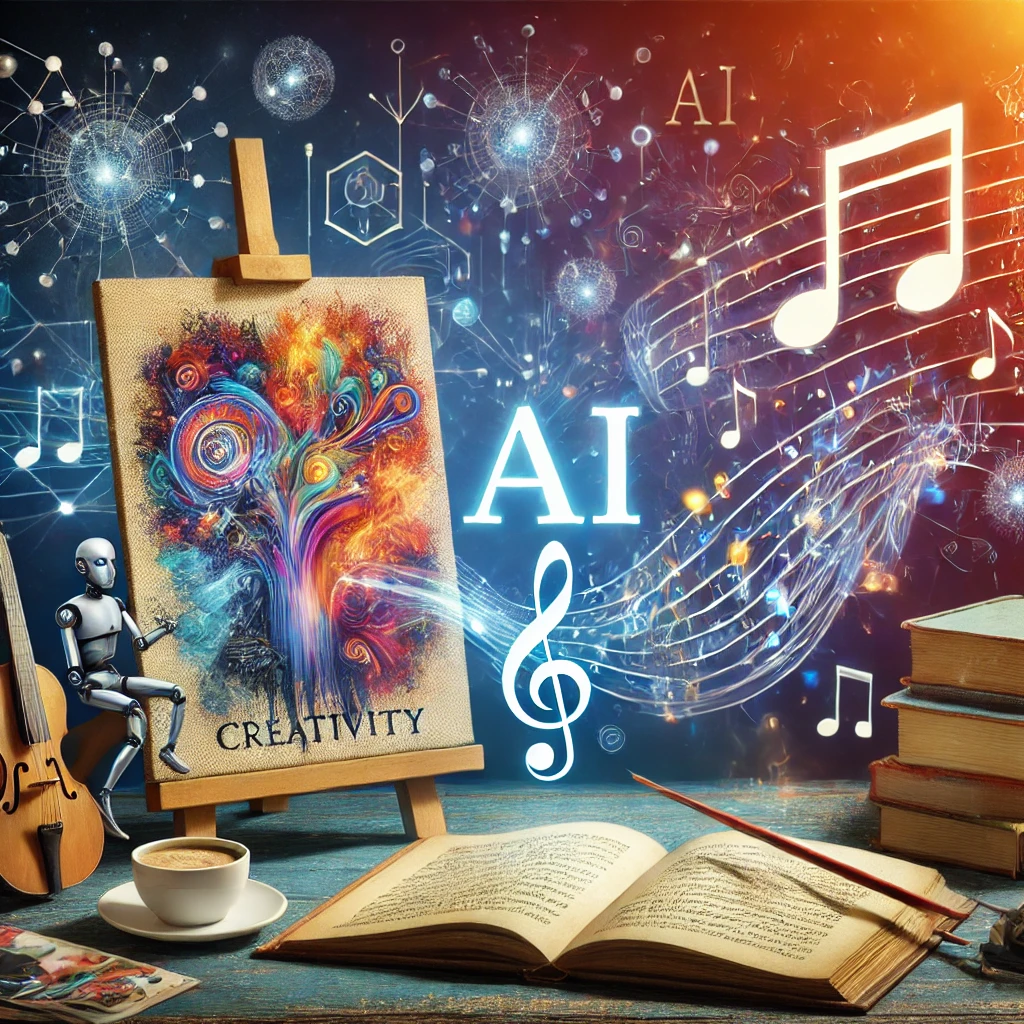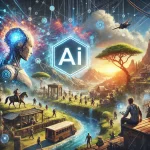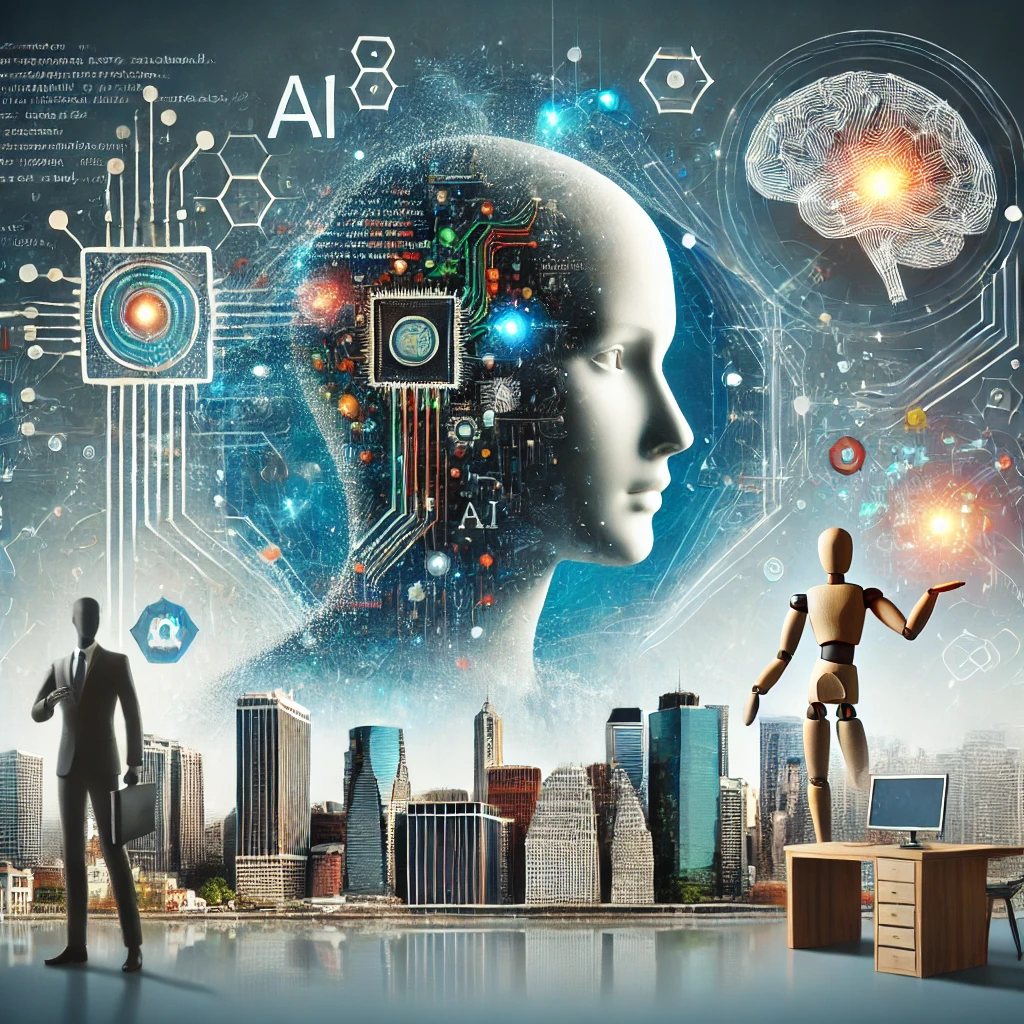Artificial intelligence (AI) has made significant strides in the realm of creativity, reshaping how art, music, and literature are conceived and produced. By leveraging advanced algorithms and machine learning, AI has opened new possibilities for creative expression, challenging traditional boundaries and offering innovative tools for artists and creators.
AI in Visual Arts
In the world of visual arts, AI has become a powerful collaborator for artists. Tools like DeepArt and Artbreeder allow users to generate unique artworks by blending styles or transforming images using neural networks. These platforms utilize generative adversarial networks (GANs) to create visuals that range from abstract to photorealistic, often resulting in pieces that challenge conventional artistic norms.
Additionally, AI art installations have gained prominence in galleries and exhibitions. Artists like Refik Anadol utilize data-driven algorithms to create immersive experiences, where visuals evolve in real-time based on environmental or audience inputs. This fusion of technology and creativity not only captivates viewers but also pushes the boundaries of how art is experienced.
AI in Music Composition
AI’s impact on music is equally profound, with algorithms capable of composing original pieces that span various genres. Tools like AIVA (Artificial Intelligence Virtual Artist) and OpenAI’s MuseNet generate compositions by analyzing vast datasets of existing music, learning patterns, and structures. These compositions can serve as inspiration for musicians or be used directly in media production.
Furthermore, AI aids in sound design and production, offering features like auto-mixing and mastering, which enhance the quality and efficiency of music creation. By analyzing existing tracks, AI can recommend adjustments in tempo, harmony, and instrumentation, allowing artists to experiment with new sounds and styles.
AI in Literature
In literature, AI has demonstrated its potential to craft narratives and poetry. Language models like OpenAI’s GPT series generate coherent and contextually relevant text, capable of producing anything from short stories to complex dialogues. These models learn from extensive datasets, enabling them to mimic different writing styles and genres.
AI also assists writers by providing tools for brainstorming, editing, and even plot development. Platforms like Sudowrite use AI to suggest story continuations, character development, and alternative phrasing, enhancing the creative process and offering writers new avenues for storytelling.
Challenges and Considerations
Despite its potential, the use of AI in creative fields raises important ethical and philosophical questions. Issues of authorship, originality, and the value of human creativity come to the forefront as AI-generated works gain popularity. Who owns the rights to a piece of art created by AI? How do we distinguish between human and machine-generated creativity?
Moreover, there is a concern about the over-reliance on AI tools, potentially diminishing the unique human element in art and creativity. While AI can generate impressive works, the emotional depth and lived experiences of human creators remain irreplaceable components of authentic artistic expression.
Conclusion
AI’s influence on art, music, and literature is undeniable, offering new tools and possibilities for creators while challenging traditional notions of creativity. As technology continues to evolve, it will be crucial to navigate the balance between human and machine creativity, ensuring that AI serves as an enhancement rather than a replacement for human artistry. The future of creativity lies in this collaboration, where AI acts as both an assistant and an inspiration, unlocking new realms of artistic potential.



Wonder if AI can compose perfect melody for me based on my musical preferences
Oh, I’m glad to tell you that it is possible now! Just Google this))
it feels like artists are becoming obsolete 🙁 It’s a shame they have to adapt and fit into these new realities. But on the bright side, art is now accessible to everyone, and that’s pretty cool! ✨
Real art will never die!
artists will never go outta ai could never fully replace em